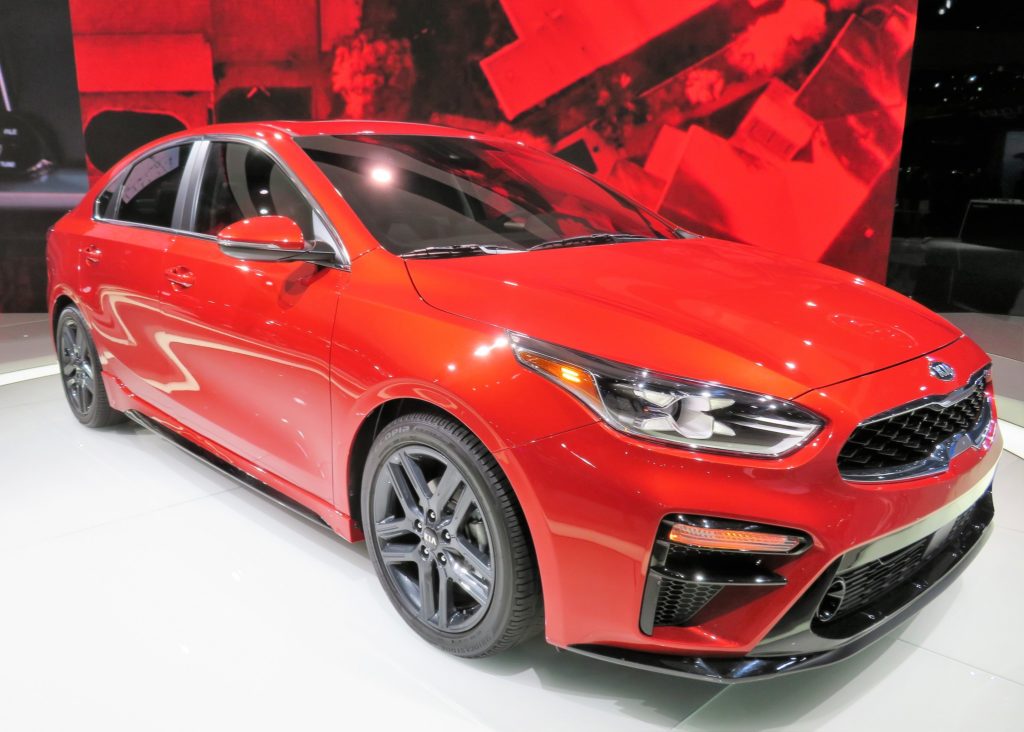The Peninsula
What Does the New NAFTA Agreement Mean for Korean Auto Makers?

By Troy Stangarone
The United States and Mexico recently announced that they have reached a preliminary agreement on updating the North American Free Trade Agreement (NAFTA). While Canada still needs to conclude talks on the revised NAFTA, the initial agreement announced includes proposed changes to automobile trade in North America that have implications for Hyundai and Kia.
In 2016, Kia opened a new production facility in Mexico as part of its efforts to break into the Mexican market and provide extra production for the broader North American market. The plant currently produces the Kia Forte and Rio models, as well as the Hyundai Accent. Last year, the plant produced 250,000 vehicles, though it has the capacity to expand to 400,000 units, and half of the production was exported to the United States.
In 2017, Kia sold 117,596 Kia Fortes in the United States and 16,760 Rios. While exact export figures from the plant in Mexico are unavailable, it is likely that a significant majority of the Kia Fortes sold in the United States and possibly all of the Rios were produced at Kia’s plant in Mexico. The Hyundai Accent, which the plant recently began producing, had sales of 58,955 in the United States last year.
Producing in Mexico is appealing to South Korean automotive producers for its lower labor costs, which on average are a fifth of those in South Korea and only a tenth of that in the United States. For example, as a new contract signed in January for workers at Hyundai in South Korea calls for workers to make an average of 50 million won ($45,138). In contrast, workers in Mexico at even luxury vehicle producers such as BMW often have a top wage of as little as $2.53 per hour.
Under the revised NAFTA, to be eligible for export to the United States, 75 percent of the vehicle content would need to be produced in North American (U.S. and Mexico), up from 62.5 percent, and 40-45 percent of that content will need to be produced by workers making at least $16 per hour. Additionally, there are reports that the United States and Mexico reached a side agreement to exempt the first 2.4 million vehicles produced in Mexico from any national security tariffs the United States might impose from the ongoing Section 232 investigation on automobiles and automotive parts.
In light of the proposed revisions to NAFTA, the simplest course of action for the production of Korean automobiles in Mexico may be to export vehicles to United States while not utilizing NAFTA. At the moment, the vehicles produced at the Kia’s plant in Mexico do not contain enough North American content to qualify for NAFTA. According to data from the National Highway Traffic Safety Administration, the Rio and the Forte contain 49 percent North American content, while the Hyundai Accent contains 50 percent North American content.
Choosing to export to the United States without using NAFTA would allow South Korean producers to not have to meet the new, higher North American content requirements. At the same time, it would allow them to not have to deal with the new wage floor established by the NAFTA revisions.
The trickier issue may be the Section 232 case. As a significant exporter of automobiles to the United States from South Korea, the Section 232 investigation has been of concern. However, recent comments by South Korean Trade Minister Kim Hyun-chong suggest that the Seoul and Washington may have reached an understanding on this issue in light of the fact the revised KORUS FTA has already modified the provisions of this pact.
The side letter with Mexico, though, raises two possibilities. The first being that the United States does intend to impose a 25 percent tariffs on imports of automobiles and automotive parts. The second, is that the United States reached an agreement on this issue with Mexico to leverage other trading partners into striking deals as well by signaling that it may follow through with the new tariffs. If it is the first, it would impact Korean exports from Mexico.
Initial reports indicate that the to be eligible for the Section 232 exemption in the side letter with Mexico, vehicles would have to meet the new NAFTA content standards – 75 percent North American content and 40-45 percent of the content from wages above $16 an hour. If the U.S. did impose a 25 percent tariff on automobiles and automotive parts, Korean producers would need to raise the current North American content level in their production to avoid the new tariff.
However, the U.S. Trade Representative’s fact sheet on the new wage standard is unclear on where the content must come from. While the text of the agreement should clarify this issue, if it is merely that 40-45 percent of the North American, not Mexican, content must be from wages over $16 an hour, it may be more cost effective to use parts from the United States to meet the new standard and maintain the current wage structure in Mexico.
Once the revised text is released in the months ahead, there will be more clarity on how the new NAFTA will work. But at this early stage, it is clear that the changes to NAFTA will also affect South Korea’s automotive exports to the United States from Mexico.
Troy Stangarone is the Senior Director for Congressional Affairs and Trade at the Korea Economic Institute of America. The views expressed here are the author’s alone.
Photo from GabboT’s photostream on flickr Creative Commons.
